Meat and Mandalas: Shintaro Kago’s Grotesque Visions of Buddhism
In his series ‘Mandalism’, this celebrated ‘ero-guro’ artist plays with visceral and repulsive interpretations of Buddhist motifs.
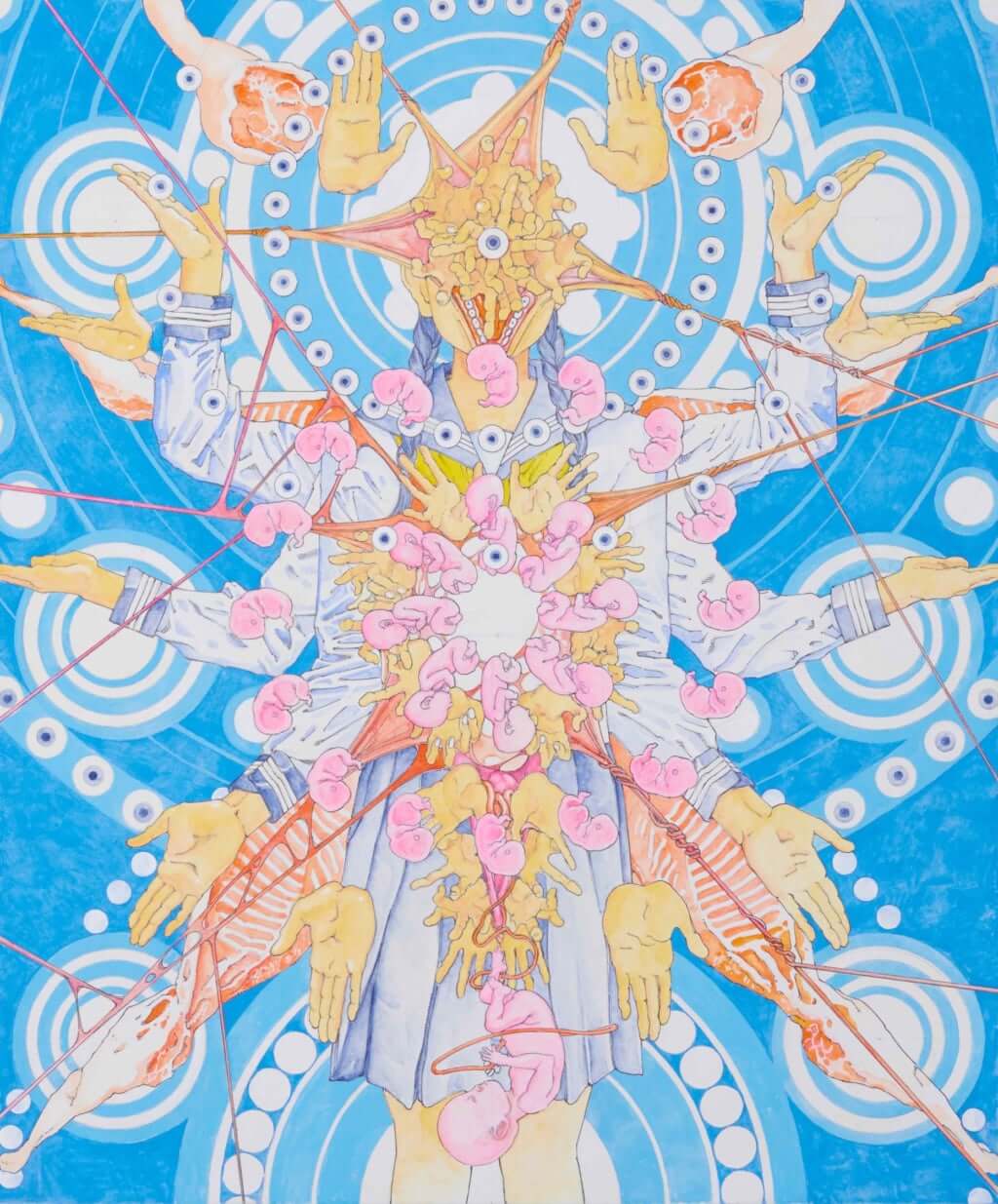
‘Fetus Mandala’ © Shintaro Kago
‘Be careful of aeroplanes. Even if you make an emergency landing on a snowy mountain and survive, there is a possibility that you will run out of food and eat the meat of the passengers who died first.’ This worrisome invocation is taken from one of Shintaro Kago’s ‘Unlucky Omikuji’. Omikuji, fortune slips, are typically available at Shinto shrines and Buddhist temples for a mere 100 yen, picked randomly from a box. But for visitors who picked a slip from the wooden box at the entrance to the Mandalism exhibition, which was displayed at Post-Fake gallery in Roppongi, Tokyo, in 2024, their only advice was to prepare for the possibility of knife attacks, accidents in industrial machinery, or cannibalism.
Born in Tokyo in 1969, Shintaro Kago is a cult manga artist and illustrator. Celebrated for his mastery of ero-guro (‘erotic grotesque’), his work tends to the bloody, the scatological, and the otherwise perverse. In his painting and installation series Mandalism, Kago interprets Japanese Buddhist motifs and practices through the muck and meat of the human body. Visitors to the exhibition could experience perversions of traditional rituals, thanks to the sales of omikuji and ema. His ema, wooden plaques on which prayers are written, bristled with images of mutilated faces, hung together on the wall, inscribed with the hopes and dreams of previous guests.
The Thousand-Armed Goddess of Mercy
The paintings abound with figures taken from Buddhist mythology. In ‘Ksitigarbha’, the titular guardian of children in Japanese Buddhism appears intricately surrounded by disembodied infant heads and women’s torsos, entangled by looping phalluses. Elsewhere, the Senju Kannon Bosatsu or Thousand-Armed Goddess of Mercy, is reimagined with a horrible literalness: in ‘Thousand-Legged Kannon Bosatsu’, she is shown mutilated, as interlocking limbs emerge around her. On inspecting the painting closely, one might notice a single pin-prick in the canvas, where Kago’s protractor has pierced both the medium and the subject; blood oozes onto her bandages around the wound. In another Kannon Bosatsu painting, ‘Genesis Kannon Bosatsu’, impossible distortions of the flesh are felt, viscerally, through close attention to the folds and tears in distended skin. Across the series, Kago appears to delight in taking these symbols of transcendence and forcing them into the moulds of the perishable human form.
As such, much of the recurrent imagery is drawn from the human body: foetuses, teeth, intestines, genitals… Like other masters of the genre, Kago understands the importance of specificity in generating effective body horror. The changing colours of exposed flesh, the strands of muscle tissue, all of this resonates with the viewer such that they feel it sink under their skin. The repugnant materiality of the body is thrown into further relief through other repeated imagery, notably meat. Raw slabs of ham adorn ‘Fetus Mandala’, whilst in ‘Chaotic Mandala’, bits of disembodied pigs and humans become almost interchangeable. The process of transcendence, the dismantling and disengagement with the physical body, appears less spiritual and more akin to the mental shift that turns a piece of flesh from a ‘pig’ into ‘pork’.
Factories of Enlightenment
This theme, of the road to enlightenment as a sort of meat-processing factory, reaches its apex in ‘Hell and Nyorai Raigouzu’. Compositionally and tonally quite unlike the other paintings in the series, ‘Hell…’ is a vision of the afterlife as a conveyor belt. Populated with enormous mutilated heads surrounded by miniature figures succumbing to awful fates, it extends from factory floor into cityscape: a bleak vision of an industrial Japanese city of motorways, canteens, and smog. Ground into sausages or drowned in excrement, the tiny human figures somehow recall both the tortured intricacies of a Hieronymus Bosch triptych, and the infantile visual curiosity of a Where’s Wally? double page spread.
Looking at ‘Hell…’ throws into relief the ways Kago plays with the traditional Buddhist composition of the mandala in the other paintings. Set against the chaos of the former, the symmetry of a painting like ‘Genesis Kannon Bosatsu’ both enchants and repels the viewer. Unlike the playfulness of spotting a new and bizarre form of torture in ‘Hell…’, the elements of these mandala paintings draw the eye in a circle: one distended limb or elongated penis inevitably loops round to another. The viewer is thus subject to a distorted form of the meditative practice of viewing a mandala, as sinking into the endless details leads one further into disgust.
Meditations on Disgust
Kago’s repulsive works can be seen in the light of historical Japanese kusozu artworks, depictions of the ‘nine stages of decay’. The contemplation of these stages is a traditional Buddhist meditative practice, one of two ‘meditations on disgust’, wherein believers would imagine or observe a corpse as it rotted, considering the impurity and impermanence of the body. This decay was divided into nine phases: distension, rupture, putrefaction… Kusozu paintings, typically of female corpses, allowed observers to ruminate on the repulsive transience of the flesh.
In this, Kago’s paintings appear less a heretical attack on religious motifs, like a Buddhist version of ‘Piss Christ’, and more as a subtle unpacking of imagery that was simmering under the surface all along. The second ‘meditation on disgust’, patikulamanasikara, is the focused contemplation of thirty-one different body parts: nails, teeth, kidneys, faeces, sweat, pus, marrow… These minutely detailed components certainly resonate with Kago’s mandalic butchery. Perhaps this, then, is the sharpest shock of the series: not the erotic, or the grotesque, but the unpleasantly meditative.
Mandalism (2024), a series of paintings by Shintaro Kago. More of his work can be seen on his Instagram. Mandalism was shown at POST-FAKE, Tokyo, from January 27th to March 3rd 2024.
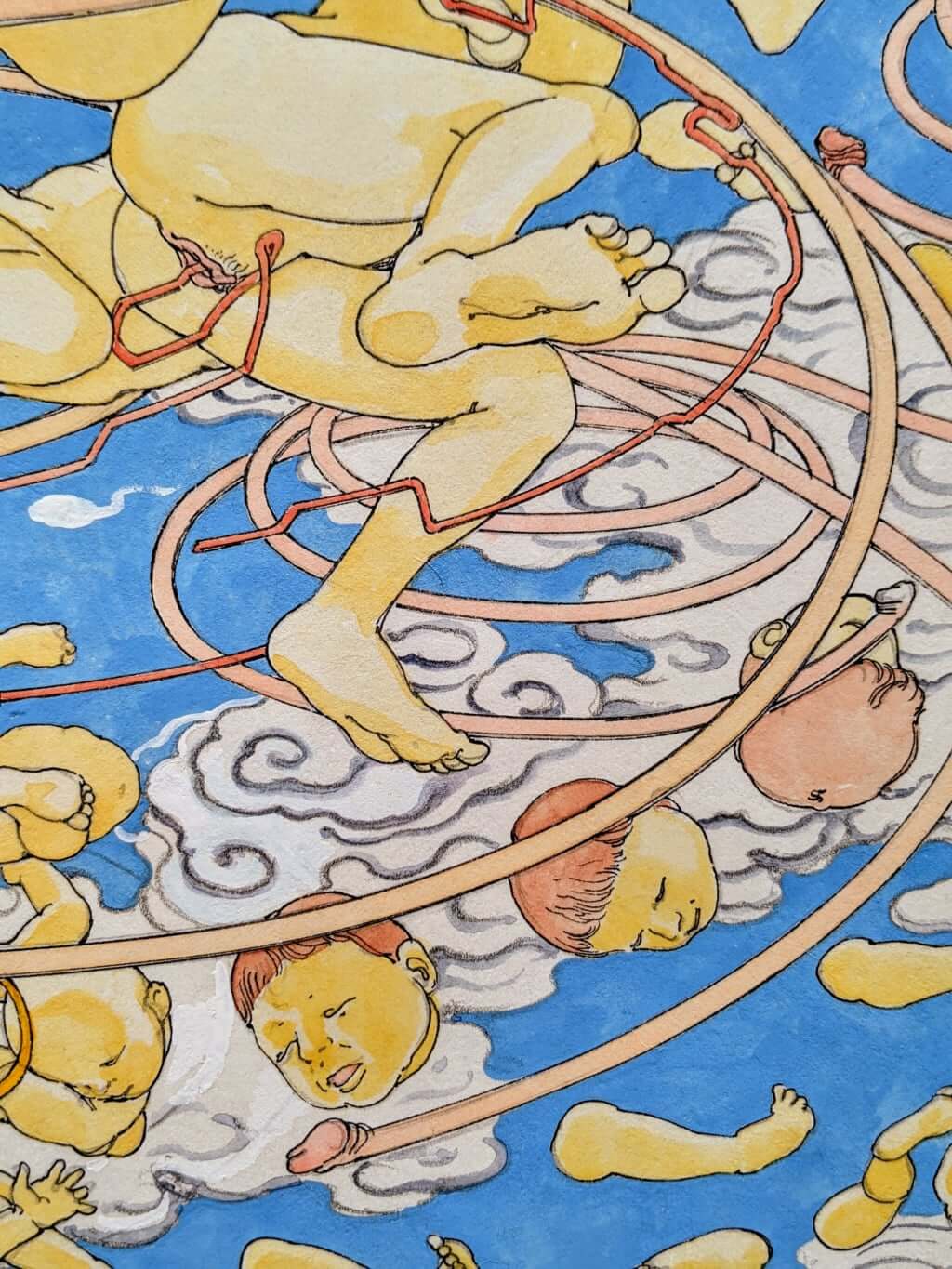
Detail from ‘Ksitigarbha’ © Shintaro Kago
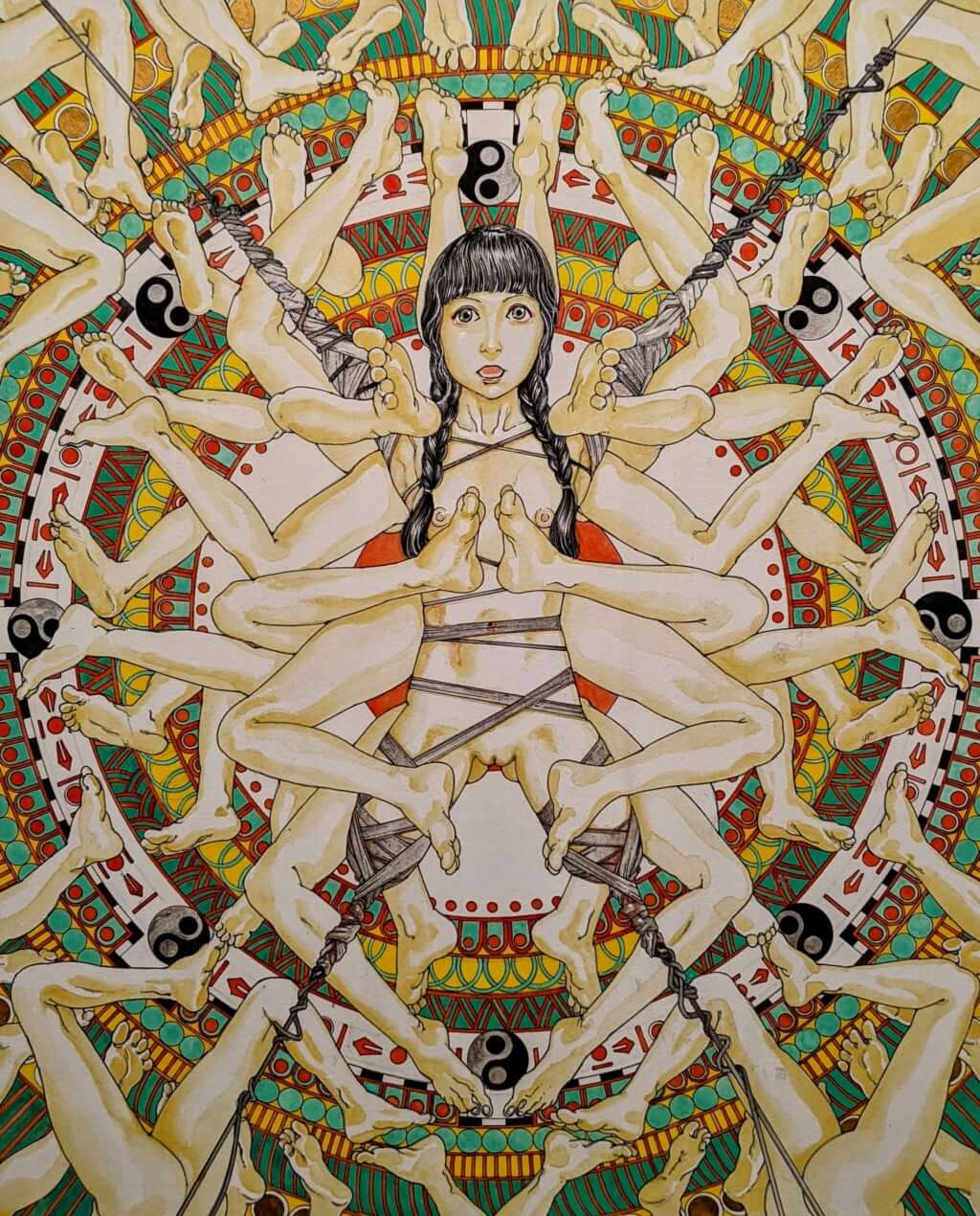
‘Thousand-Legged Kannon Bosatsu’ © Shintaro Kago
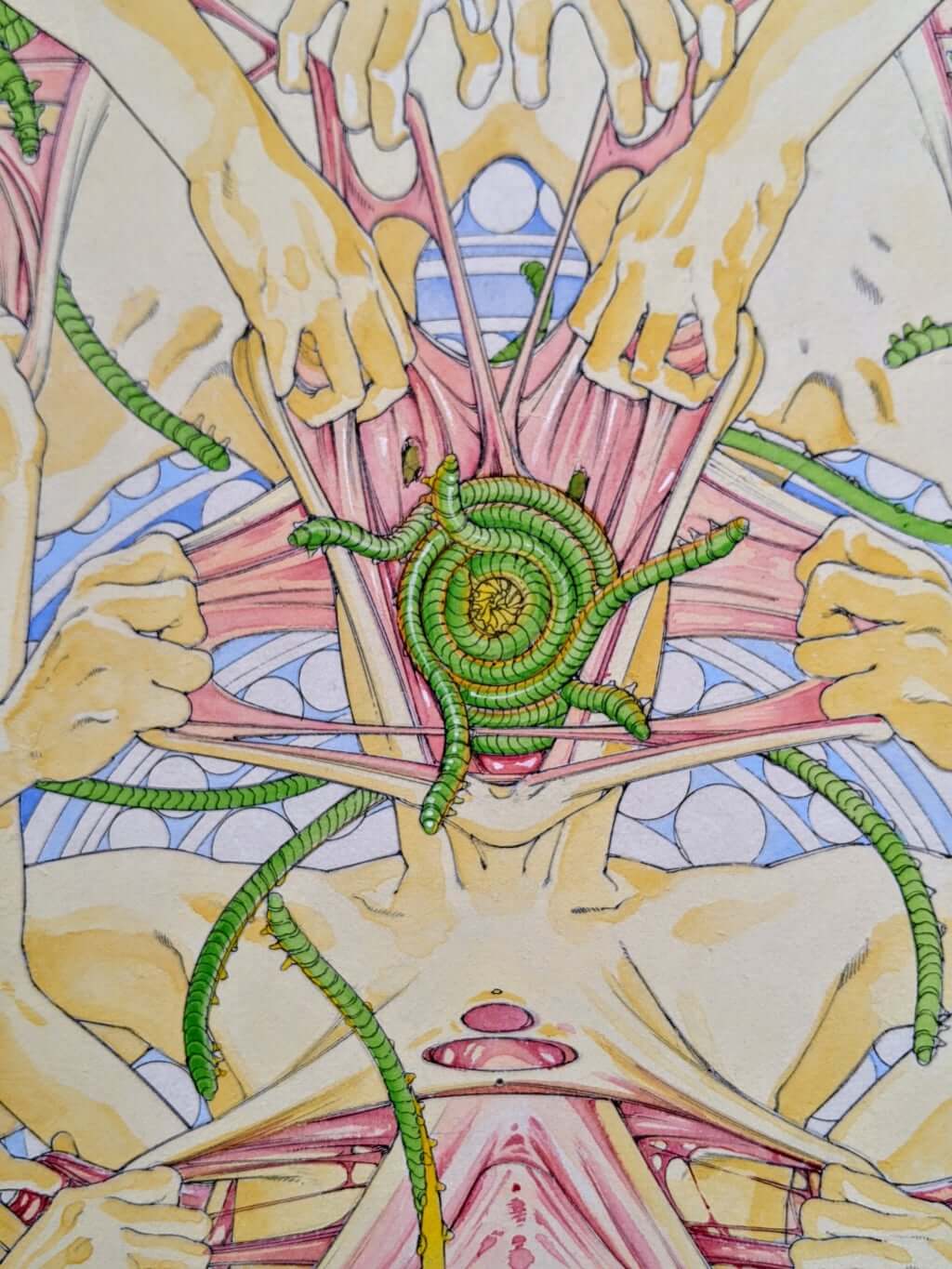
‘Genesis Kannon Bosatsu’ © Shintaro Kago
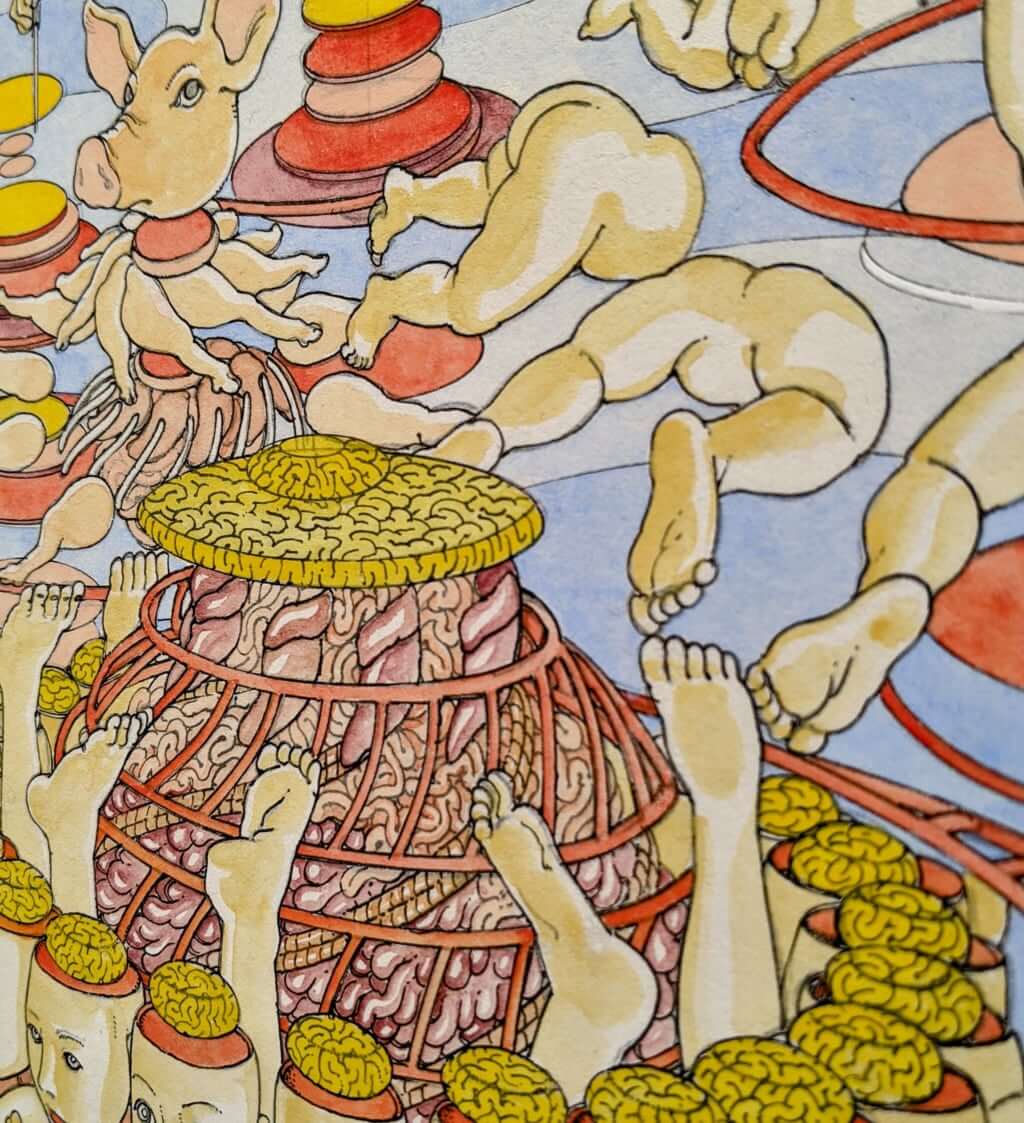
Detail from ‘Chaotic Mandala’ © Shintaro Kago
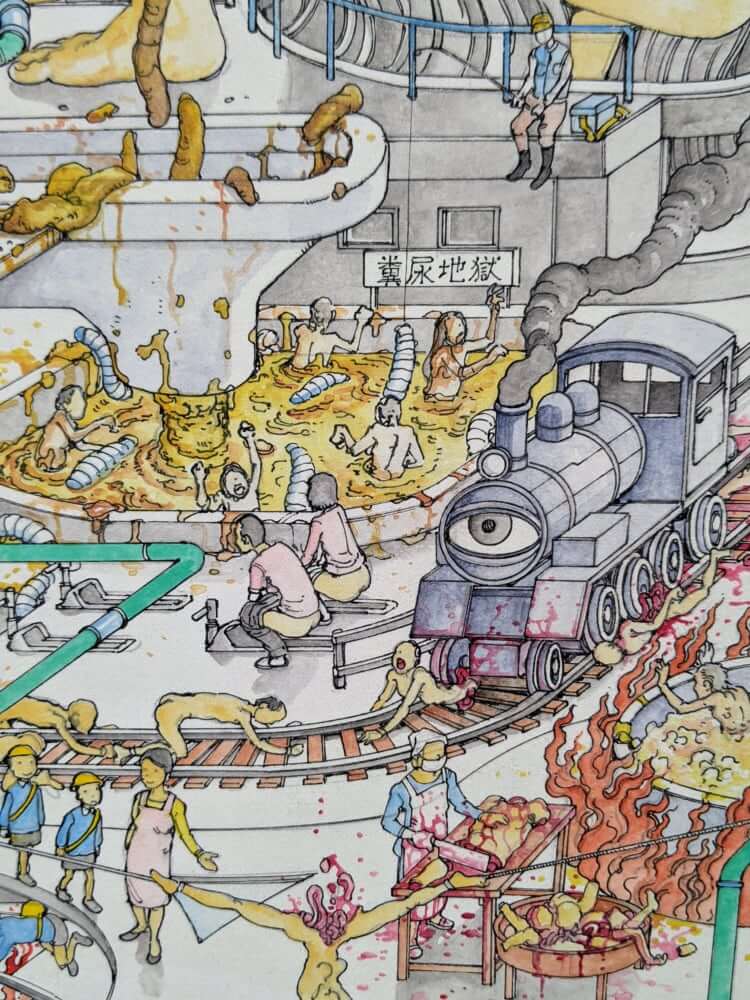
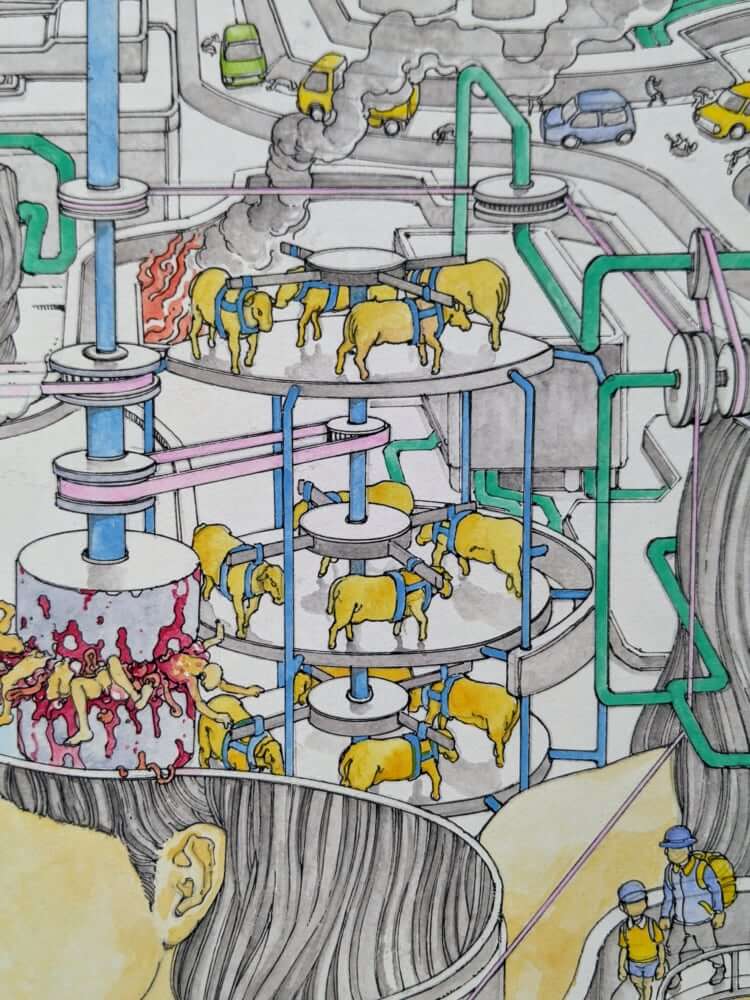
Details from ‘Hell and Nyorai Raigouzu’ © Shintaro Kago
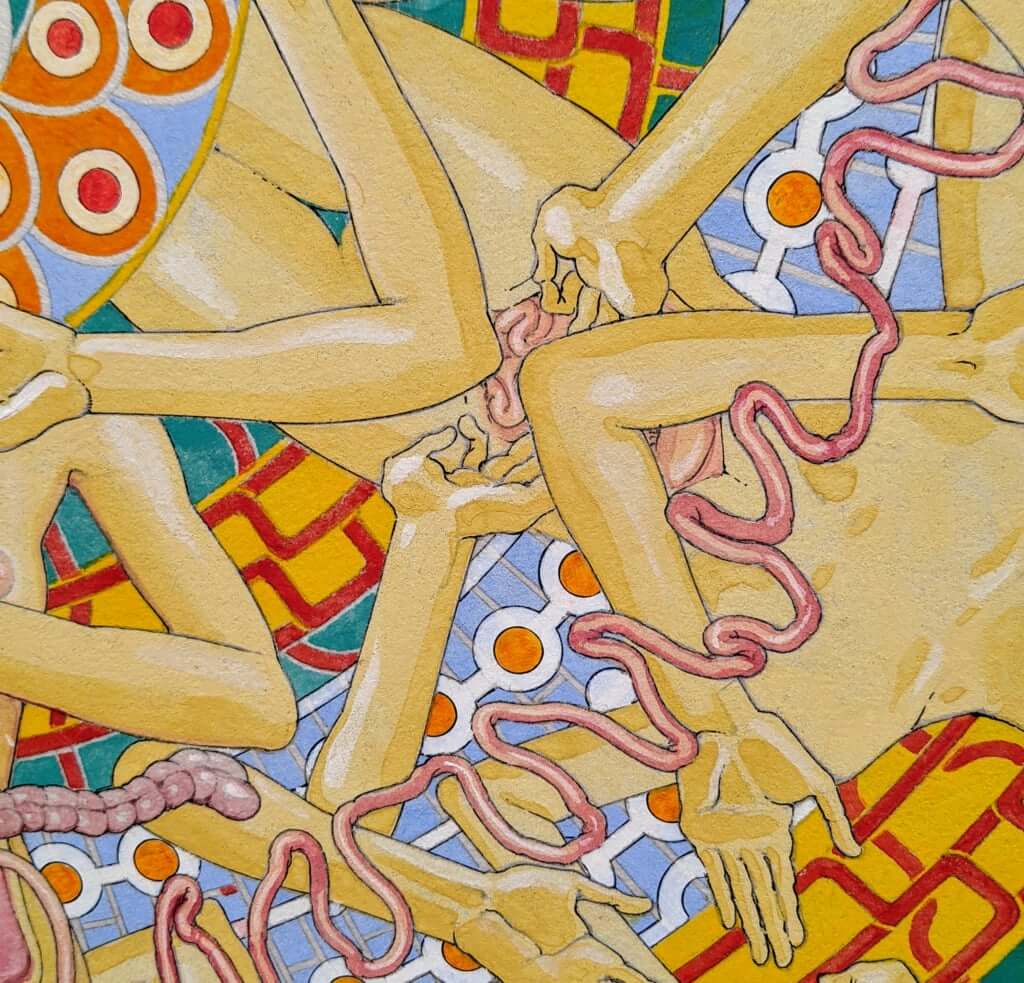
Detail from ‘Internal Organs Mandala’ © Shintaro Kago

‘Ema’ and ‘omikuji’ on display at the ‘Mandalism’ exhibition.
TRENDING
-
Ishiuchi Miyako, A Singular Perspective on Women
Recipient of the 2024 Women in Motion Award, the photographer creates intimate portraits of women through the objects they left behind.

-
Recipe for Ichiraku Ramen from ‘Naruto’ by Danielle Baghernejad
Taken from the popular manga with the character of the same name who loves ramen, this dish is named after the hero's favourite restaurant.

-
Namio Harukawa, Master of Japanese SM Art
'Garden of Domina' offers a dive into the world of an icon of ‘oshiri’, whose work has now reached a global audience.

-
The Tattoos that Marked the Criminals of the Edo Period
Traditional tattoos were strong signifiers; murderers had head tattoos, while theft might result in an arm tattoo.

-
The Emperor of Japanese Porn is Now the Star of a Netflix Series
Deliciously funny, The Naked Director especially succeeds in reviving the atmosphere that was so characteristic of 1980s Japan.





